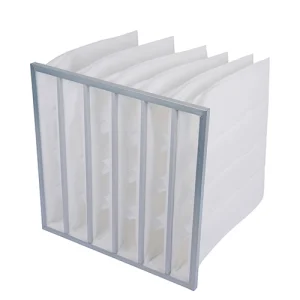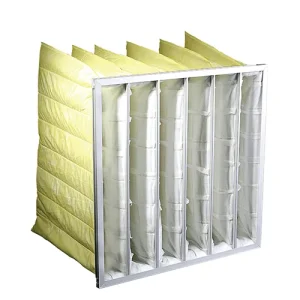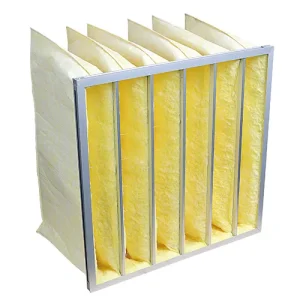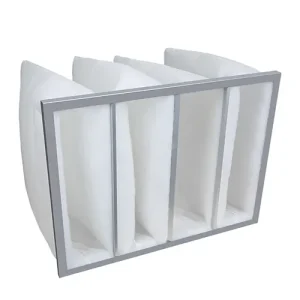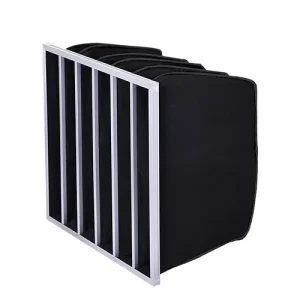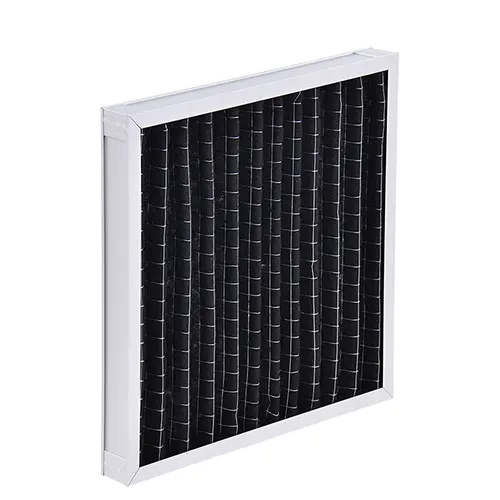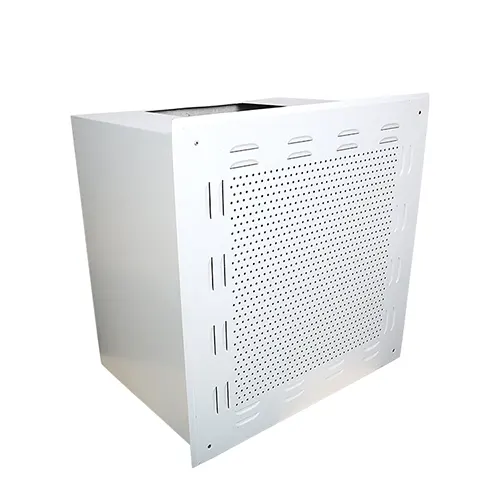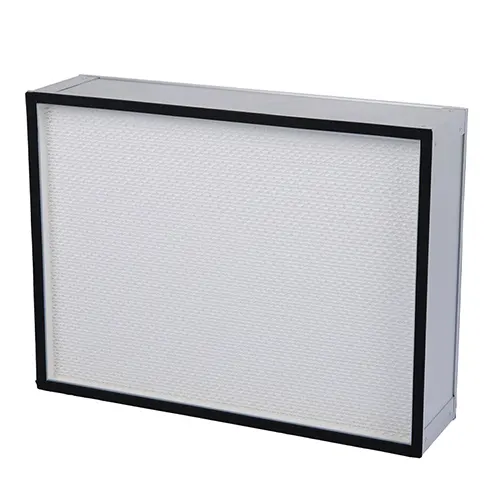How to Improve Indoor Air Quality in Office Buildings

Indoor air quality (IAQ) in office buildings is a crucial factor that affects the health, comfort, and productivity of employees. Poor IAQ can lead to various health issues, including respiratory problems, headaches, and fatigue.
Therefore, it’s essential for building managers and employers to implement strategies to improve and maintain good air quality. This post will cover effective methods to enhance IAQ in office environments.
Table of Contents:
Section 1: Understanding Indoor Air Quality (IAQ)
Section 2: Ventilation Strategies
Section 3: Air Filtration
Understanding Indoor Air Quality (IAQ)
Importance of IAQ in Office Environments
Healthy Employees are More Productive and Take Fewer Sick Days
Indoor air quality (IAQ) directly impacts the health and productivity of employees in office environments. Poor air quality can lead to a range of health issues, including respiratory problems, headaches, eye irritation, and fatigue.
These health problems can result in increased sick leave, reduced work efficiency, and higher healthcare costs for employers.
Good IAQ Can Enhance Cognitive Function and Overall Well-being
Several studies have shown that good IAQ can enhance cognitive function, concentration, and overall mental well-being.
Employees working in environments with clean air are likely to perform better, make fewer errors, and exhibit higher levels of creativity and problem-solving skills.
Common Pollutants in Office Buildings
Volatile Organic Compounds (VOCs) from Office Supplies and Furnishings
Volatile Organic Compounds (VOCs) are emitted as gases from certain solids or liquids, including many office supplies and furnishings. Common sources of VOCs in office buildings include:
- Office equipment like printers and copiers.
- Cleaning products and air fresheners.
- Paints, adhesives, and varnishes.
- Carpets, furniture, and other building materials.
VOCs can cause a variety of health issues, such as eye, nose, and throat irritation, headaches, and even long-term chronic illnesses. Reducing the presence of VOCs is crucial for maintaining good IAQ.
Ventilation Strategies
Improving indoor air quality in office buildings starts with understanding and implementing effective ventilation strategies. Ventilation is the process of exchanging or replacing air in any space to provide high indoor air quality, which includes the control of temperature, replenishment of oxygen, and removal of moisture, odors, smoke, heat, dust, airborne bacteria, and carbon dioxide.
Importance of Proper Ventilation
To ensure a healthy indoor environment, proper ventilation is crucial. Effective ventilation helps in:
Diluting and Removing Pollutants: Proper ventilation systems dilute indoor airborne pollutants, reducing their concentration and minimizing health risks for occupants.
Controlling Humidity: By managing humidity levels, proper ventilation prevents conditions that are conducive to mold growth, thereby safeguarding both the building structure and the health of its occupants.
Ensuring Comfort: Adequate ventilation maintains comfortable indoor temperature and air quality, which can significantly enhance employee comfort and productivity.
Types of Ventilation Systems
There are several types of ventilation systems that can be implemented in office buildings, each with its own benefits:
Mechanical Ventilation: This type of ventilation uses fans and ducts to bring in fresh air from the outside and expel indoor air. Mechanical ventilation systems, such as HVAC (Heating, Ventilation, and Air Conditioning) systems, can be controlled to maintain optimal air quality and temperature.
Natural Ventilation: Utilizing windows, vents, and other openings, natural ventilation relies on natural forces like wind and temperature differences to circulate air. While it’s energy-efficient, it can be less controllable compared to mechanical systems.
Hybrid Ventilation Systems: Combining both mechanical and natural ventilation, hybrid systems offer flexibility and efficiency. They can switch between natural and mechanical modes depending on the outdoor conditions and indoor air quality requirements.
Best Practices for Maintaining Ventilation Systems
To ensure that ventilation systems operate efficiently and effectively, regular maintenance is essential. Here are some best practices:
Regular Maintenance and Cleaning: HVAC systems and ventilation components should be regularly inspected and cleaned to prevent the buildup of dust and debris, which can impede airflow and reduce efficiency.
Proper Placement of Air Intakes: Ensure that air intakes are located away from pollution sources such as exhaust vents, loading docks, and dumpsters to prevent contaminants from being drawn into the building.
Routine Inspection and Replacement of Filters: Air filters should be inspected regularly and replaced as needed to maintain optimal airflow and filtration efficiency. This helps in reducing the concentration of airborne pollutants.
Air Filtration
Importance of IAQ in Office Environments
To maintain optimal indoor air quality in office buildings, implementing effective air filtration and purification systems is essential.
These systems help to remove pollutants, allergens, and pathogens from the air, ensuring a healthy and comfortable environment for employees.
Types of Air Filters
Different types of air filters serve various purposes in air purification systems. Here are the key types of filters used in office buildings:
HEPA Filters: High-Efficiency Particulate Air (HEPA) filters are known for their ability to trap small particles. These filters can capture particles as small as 0.3 microns with 99.97% efficiency, making them highly effective at removing dust, pollen, mold spores, and other airborne particles.
HEPA filters are particularly beneficial in office environments where dust and allergens can affect employees’ health and productivity.
Activated Carbon Filters: Activated carbon filters are designed to absorb gases, odors, and chemical vapors.
These filters contain porous carbon material that traps volatile organic compounds (VOCs) and other harmful gases, preventing them from circulating in the indoor air.
Activated carbon filters are especially useful in offices with strong odors from cleaning products, paints, or office equipment.
Choosing the Right Air Purifier
Selecting the appropriate air purifier for your office space involves several considerations:
Consider the Size of the Office Space: Air purifiers come in various sizes and capacities, designed to handle different room sizes.
It’s important to choose a purifier that matches the size of the office space to ensure adequate air filtration. Check the manufacturer’s specifications for the recommended room size coverage.
Look for systems with Multiple Filtration Stages: Air filtration with multiple filtration stages provide comprehensive air cleaning.
A combination of pre-filters, HEPA filters, activated carbon filters, and UV light purifiers can effectively remove a wide range of pollutants from the air. Multi-stage filtration systems offer better performance and improved indoor air quality.
Maintenance of Air Purifiers
Regular maintenance is crucial to keep air purifiers functioning effectively. Here are some maintenance tips:
Follow Manufacturer Guidelines for Filter Replacement: Air filters need to be replaced periodically to maintain their effectiveness. Follow the manufacturer’s recommendations for filter replacement schedules. Some air purifiers have indicator lights that alert you when it’s time to change the filters.
Regularly Clean the Unit to Maintain Efficiency: In addition to replacing filters, it’s important to clean the air purifier regularly. Dust and debris can accumulate on the exterior and interior components, reducing the unit’s efficiency. Wipe down the exterior surfaces and vacuum the air intake and outlet grills to ensure proper airflow.
Conclusion
Improving indoor air quality in office buildings is essential for the health and productivity of employees.
By implementing proper ventilation, air filtration, monitoring, and source control strategies, offices can maintain a healthy indoor environment. Regular maintenance and the adoption of innovative technologies can further enhance IAQ, ensuring a safe and comfortable workplace for all.
